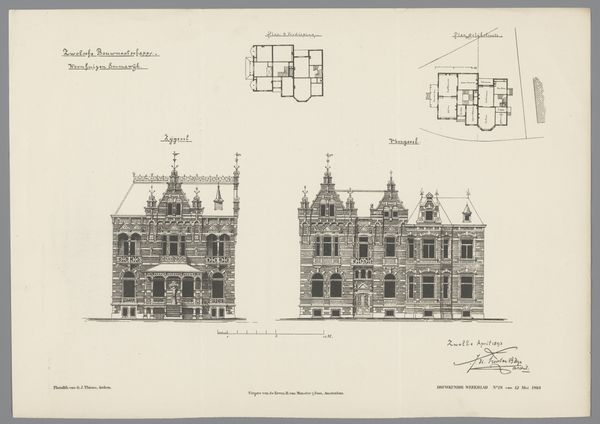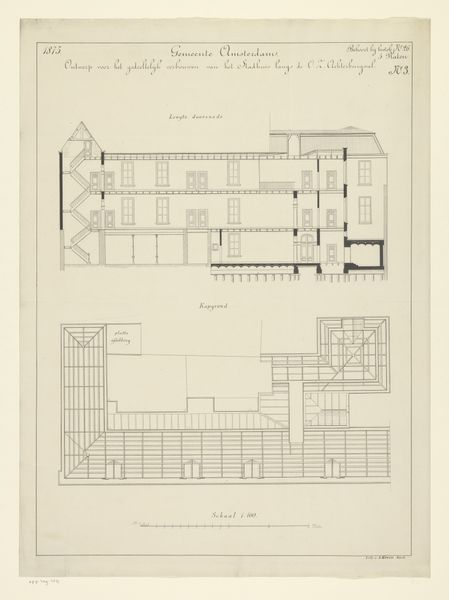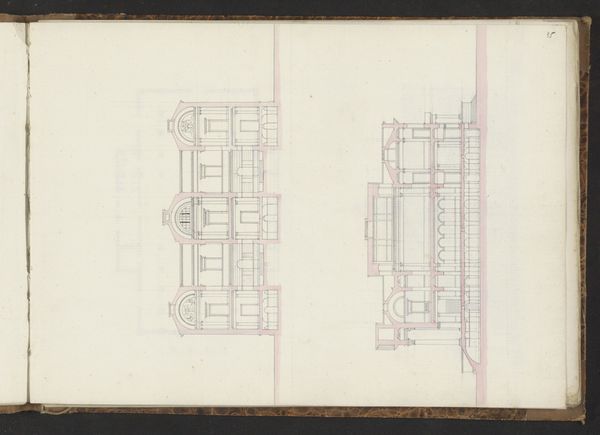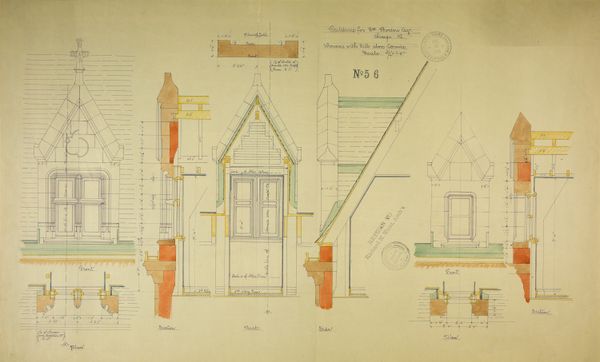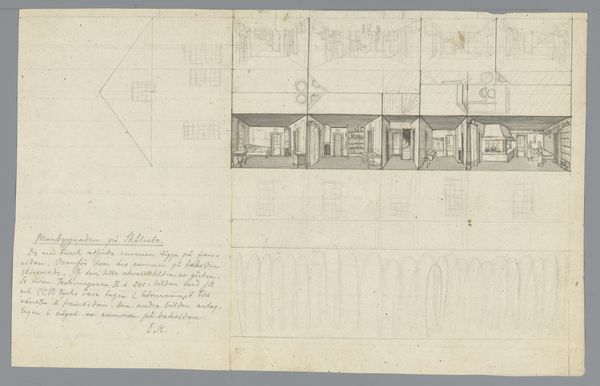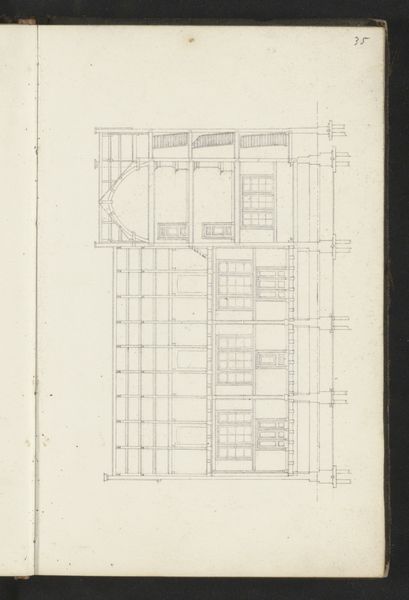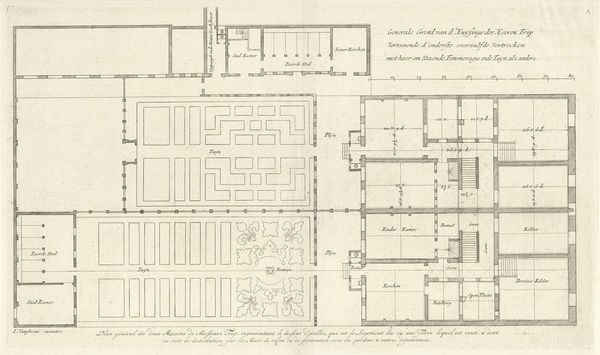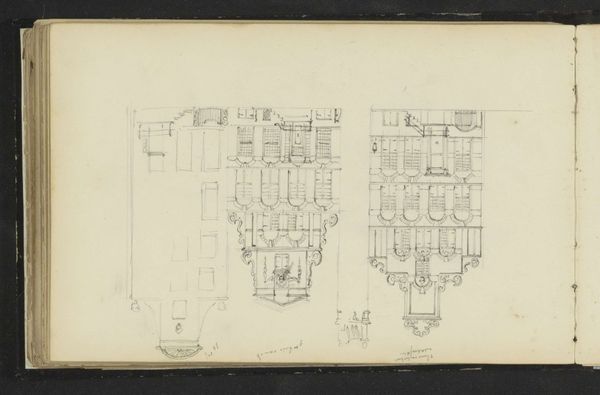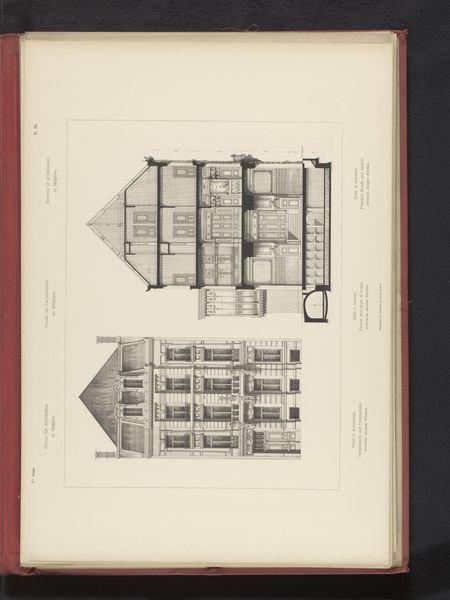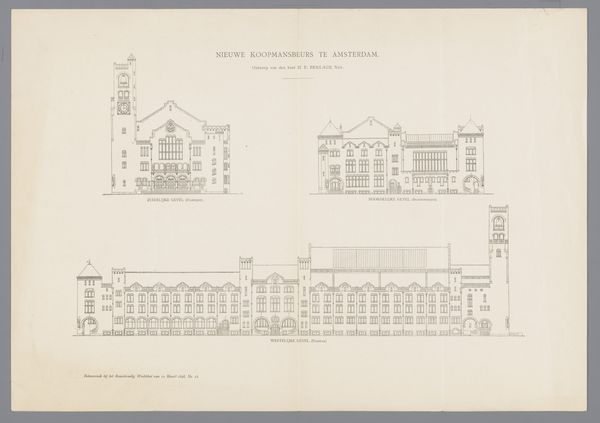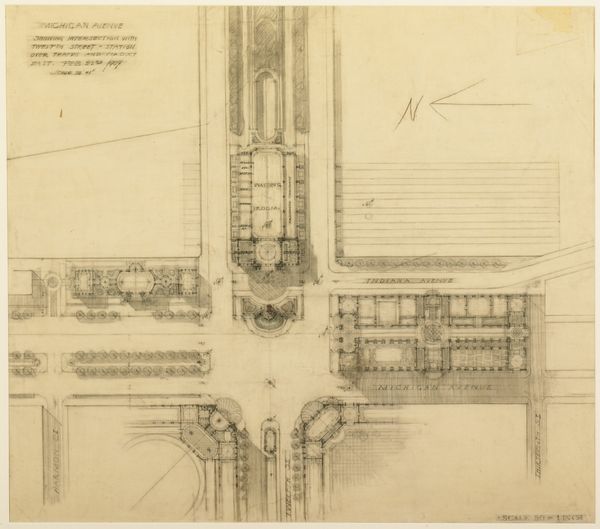
drawing, print, paper, ink, architecture
#
drawing
# print
#
paper
#
ink
#
architectural drawing
#
architecture drawing
#
architecture
Dimensions: height 35 mm, width 492 mm
Copyright: Rijks Museum: Open Domain
Curator: Looking at this drawing titled "Aanzichten en plattegronden van Verenigingsgebouw Ons Huis" made in 1896, we see a meticulous rendering in ink on paper by Wegner & Mottu, currently held in the Rijksmuseum. Editor: My initial impression is of ordered complexity. The crisp lines give it a sense of precision, almost sterile in its clarity. But the varying perspectives – the elevation, the floorplans, the interior view – create an engaging dynamism. Curator: I'm drawn to how the drawing represents both the external facade and the internal organization of this "Ons Huis," or "Our House." Examining this particular building allows us to investigate social dynamics. 'Ons Huis' served as community centers offering education and recreation to the working class. Editor: Precisely! Understanding the physical materials used – the ink and paper – leads us to question the means of architectural production at the time, it represents an effort to visualize social progress through built form, but one intended to contain and control a specific demographic. These organizations were funded by philanthropists and often intended to shape working-class culture. Curator: Absolutely. The meticulous nature of the draftsmanship speaks volumes. The detailed floor plans tell us how people would move through the space and for what activities. Notice, for example, the emphasis placed on large assembly areas. It was conceived as an instrument of social engineering, a tool for shaping communal behavior and civic identity. Editor: What about the construction itself? This required skilled labor. The very act of building ‘Ons Huis’ provided wages and contributed to the material conditions of the workers. What was the source of these funds? Did workers have agency, or input, into the design process, or were they simply cogs in a capitalist wheel building a house that they were barred from entering as equals? Curator: These are excellent questions, underscoring the intersection of capital, labor, and social control in the late 19th century. Perhaps it also illustrates an ideal, that of empowering working-class citizens through education and recreation. Editor: Yes, perhaps, but by whose standards, and to what end? Seeing how spaces of alleged benevolence are used for ideological construction opens our eyes to the present day when many cultural productions still have material inequality baked in from the start. Curator: Thank you. Reflecting on both the intent and impact of this building prompts one to think deeply about urbanism, power structures, and architecture as an ideological statement. Editor: A sobering reminder that art and architecture are never neutral. The very act of drawing it involves a set of values and considerations that are worth interrogating even after all these years.
Comments
No comments
Be the first to comment and join the conversation on the ultimate creative platform.

